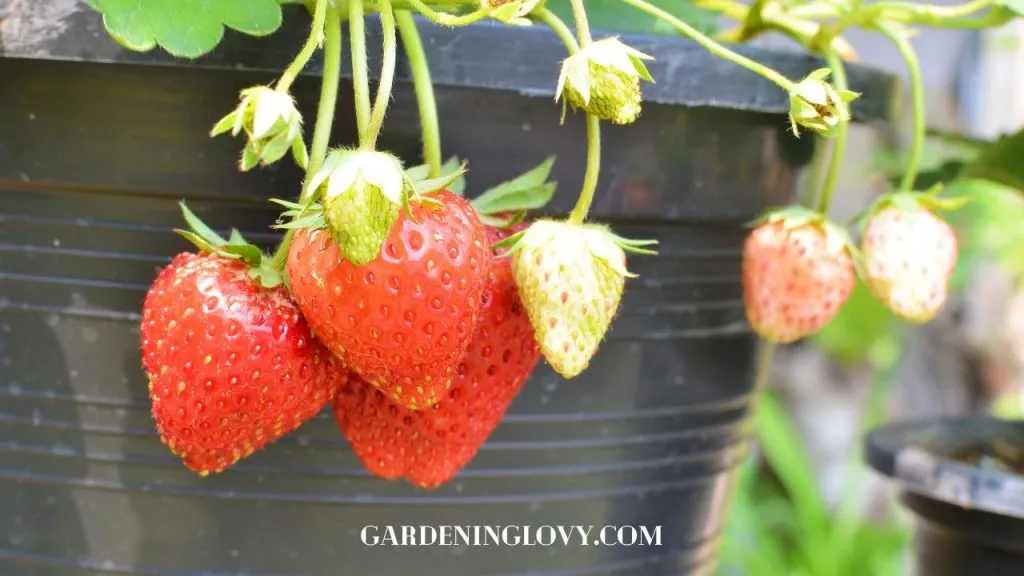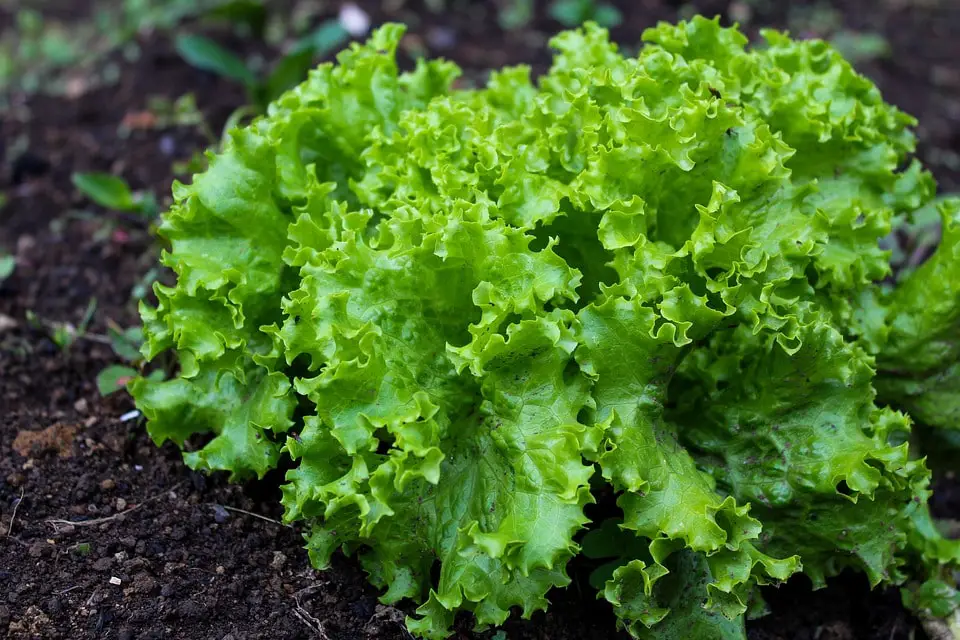Companion planting is a good option if you are trying to be efficient about growing the produce. Here learn about spinach companion plants to grow in your garden.
The highly nutritious vegetable recognized as spinach, or Spinacia oleracea, has been farmed for generations and prized for its healthful properties and mouthwatering texture.
This adaptable species is a central Asian native as well as a representative of the Amaranthaceae family.
The unique scratchy leaves of spinach are renowned for being full of vitamins, nutrients, and antioxidants that are good for general wellness.
It is a cool-season product that is appreciated by both agricultural producers and household growers since it can be cultivated in a range of climates.
Whether enjoyed raw in salads, sauteed as a side dish, or blended into smoothies, spinach is a nutritious and delicious addition to any diet.
If you are one of those who like to grow their own produce and are thinking of growing spinach, then it is important to learn the best way to efficiently grow this crop: through companion planting.
In this blog, we’ll look at the world of spinach companion plants and give you useful information and gardening tips.
By choosing plants that go well with spinach, you can create a healthy environment that helps plants grow well and gives you a lot of food. Learn all about spinach companion plants below.
Understanding the role of companion plants?
Companion planting is a useful gardening technique that includes putting plants together in a way that helps them grow, keeps pests away, and gets the most crops out of them.
Companion planting is growing different kinds of plants close to each other on purpose to take advantage of the good relationships they can form.
The goal of companion planting is to improve the health of plants, increase the fertility of the soil, draw beneficial insects, keep pests away, and make the garden as productive as possible as a whole.
Advantages of Companion Planting
- Control of Pests: Certain companion plants repel pests that commonly attack spinach, reducing the need for pesticides.
- Nutrient Cycling: Some companion plants have deep root systems that draw up nutrients from the soil’s lower layers, thereby benefiting spinach’s shallow roots.
- Shade and Sunlight Optimization: Companion plants can provide shade for delicate spinach plants or function as living trellises to support vertical growth.
- Increased Pollination: Companion plant flowers attract pollinators, resulting in improved pollination and higher spinach yields.
Factors When Selecting Companion Plants
- Growth Habits: Consider the height, spread, and growth rate of both spinach and its companion plants to assure space and resource compatibility.
- Nutrient Requirements: Steer clear of companion plants that compete with spinach for the same nutrients, as this can inhibit its growth.
- Pests and Diseases: Look for companion plants that repel or discourage common pests and diseases that affect spinach.
- Flowering Period: To assure a steady supply of pollinators throughout the growing season, choose companion plants with varying flowering times.
8 Best Spinach Companion Plants
Companion planting is the best way to grow two or more mutually beneficial crops; any two or more crops that grow together help each other by protecting them against harmful organisms and promoting the growth of the other plant.
Here is the list of best companion plants for spinach you can add to your garden:

1. Broccoli
For a number of reasons, planting broccoli with spinach can be advantageous.
- First off, the ideal growing conditions for both spinach and broccoli are full sun to partial shade and well-drained soil. They can coexist successfully in the same garden bed because of this.
- Moreover, broccoli becomes the wall that keeps bugs at bay and protects spinach. Indole-3-acetonitrile (IAN), a naturally occurring substance found in broccoli, is effective at keeping pests like aphids, cabbage loopers, and whiteflies away.
- In addition, having broccoli in the garden bed might draw helpful insects like ladybirds and lacewings, which eat pests that can harm spinach plants.
- Lastly, growing broccoli and spinach side by side can help you make the most of your garden space. Spinach prefers lower temperatures and can keep growing and producing all season, but broccoli is a cool-season crop that may be harvested even before the summer heat arrives.
This enables effective use of space and resources by allowing you to grow broccoli and spinach in the same garden bed and pick them up at various times.
2. Strawberries

Strawberries and spinach make great companions, as they both prefer similar growing conditions, and the strawberries can provide a ground cover that helps to retain moisture and prevent weeds.
3. Beans
Beans fix nitrogen in the soil, which can benefit spinach plants by providing them with the nutrients they need to grow.
Additionally, the tall bean plants can provide shade for the spinach, helping to keep the soil cool and moist.
4. Peas
Peas are generally considered good companion plants for spinach.
Peas belong to the legume family, and just like beans, they can also take care of the nitrogen in the soil, which is beneficial for spinach plants.
- Nitrogen is an essential nutrient for plant growth, and spinach requires a steady supply of it to produce healthy, vibrant leaves.
- Additionally, peas can provide some shade for spinach plants, which can help to keep the soil cool and moist.
- This can be especially beneficial during hot summer months when spinach plants are prone to bolting (going to seed prematurely) if they become too stressed.
However, it’s worth noting that peas and spinach have different growing requirements, with peas preferring a slightly more alkaline soil than spinach.
Therefore, it’s important to ensure that the soil pH is appropriate for both plants before planting them together. Additionally, peas can grow quite tall and may shade the spinach too much if they’re planted too closely together.
Hence, it’s a good idea to leave enough space between the plants to allow for adequate light and air circulation.
5. Cabbage
Cabbage is a good spinach companion plant.
This is because cabbage has natural pest-repellent properties, which can help protect spinach from insect pests like aphids and caterpillars.
In addition to repelling pests, cabbage also provides shade and shelter for spinach, which can help keep the soil moist and cool and prevent the spinach from bolting (going to seed) too quickly.
It’s worth noting, however, that some gardeners have reported that cabbage and spinach can compete for nutrients if planted too close together, so it’s important to give each plant enough space to grow and thrive.
Additionally, if you’re growing cabbage and spinach in the same bed, you should rotate the crops each year to prevent soil-borne diseases from building up in the soil.
6. Radishes
Radishes can help to deter pests like aphids and flea beetles, which can damage spinach plants.
Additionally, the radishes can be harvested before the spinach plants mature, making efficient use of space in the garden.
- Benefits: They break up compacted soil, discourage leaf miners, and function as a natural aphid repellent.
- Planting considerations: Sow radish seeds alongside spinach seeds and thin them out as they grow to provide sufficient space.
7. Nasturtiums
Nasturtiums are known to repel pests like aphids, whiteflies, and squash bugs, making them a great companion plant for spinach.
Additionally, nasturtiums are good for ingestion; both the leaves and flowers are edible and hence used in a bunch of side dishes or garnishing.
- Advantages: Their potent odor repels aphids, whiteflies, and squash bugs while enticing predatory insects that prey on these pests.
- Planting Considerations: Plant nasturtiums around the perimeter or between clusters of spinach to create a natural barrier.
8. Lettuce

Lettuce is a verdant green vegetable with a variety of textures and flavors.
Their potent fragrance repels aphids, whiteflies, and squash bugs while attracting predatory insects that feed on these pests.
To create a natural barrier, plant nasturtiums along the perimeter or between spinach clusters.
Which plants should not be grown with the Spinach plant?
There are some plants that are not good companions for spinach in the garden, as they can compete for resources, attract pests, or inhibit growth. Here are a few examples:
Plants in the nightshade family (like tomatoes, peppers, and eggplants) are also not good companions for spinach, as they have similar nutrient requirements and can compete for resources.
- Plants in the allium family (like onions and garlic) can inhibit the growth of spinach and other leafy greens if they are too close, so they should not be planted together.
- While bush beans can be good companions for spinach, pole beans can be problematic, as they can grow tall and shade out the spinach.
It’s always a good idea to do some research on companion planting before planning your garden to ensure that you’re selecting plants that will thrive together.
Why is my spinach plant not growing?
There can be a few reasons why your spinach plant is not growing. If your plant is not getting enough sunlight, it may be slow to grow or may not grow at all.
The ideal light requirement is around 6 hours each day.
Spinach needs consistent moisture to grow, but overwatering or underwatering can both be problematic. If the soil is too wet, the roots may rot, but if the soil is too dry, the plant may wilt and die.
If your plant is being attacked by pests or showing signs of disease (such as yellowing leaves or stunted growth), it may not be able to grow properly.
Spinach plants need adequate space to grow, so if you plant them too close together, they may be competing for resources and not growing as well as they could.
To address these issues, you can try adjusting the amount of sunlight your plant is getting, improving soil conditions with compost or other amendments, adjusting your watering schedule, and addressing any pest or disease issues.
If your spinach plants are too crowded, you may need to thin them out to give them more space to grow.
companion plants for spinach FAQs
Q: Can spinach be planted alongside other greens?
Yes, spinach can be planted alongside other leafy greens such as lettuce, rocket, and Swiss chard, provided that they have similar growing requirements and do not compete for space or nutrients.
Q: How do I determine the spacing between spinach and its companions?
Adhere to the recommended plant spacing for each species. Providing sufficient space to allow air circulation and prevent congestion is essential for healthy growth.
Q: Can I cultivate spinach alongside herbs?
Yes, herbs such as basil, thyme, and mint can be grown alongside spinach because they deter vermin and provide aromatic benefits.
Consider both plants’ growth tendencies and provide adequate spacing
Wrapping It Up: Spinach Companion Plants
Spinach companion plants, like cabbage, can help repel pests that may damage spinach, such as aphids or leaf miners. This can help protect the spinach and prevent damage. Certain companion plants, like peas, can fix nitrogen in the soil, which can help provide the nutrients that spinach needs to grow.
Companion plants can help improve the overall health of the soil in the garden bed, which can benefit the growth of spinach and other plants.
This can be beneficial for spinach, as it relies on pollination to produce seeds. By planting companion plants alongside spinach, you can create a more diverse and healthy garden ecosystem that benefits all of the plants in the bed.

My name is Olivia, and I live in the United States and love having plants in my garden. Lots of plants are there on my balcony, indoor and outdoor garden also. Here I am trying to share useful gardening tips, how to grow and care for various plants, etc.
